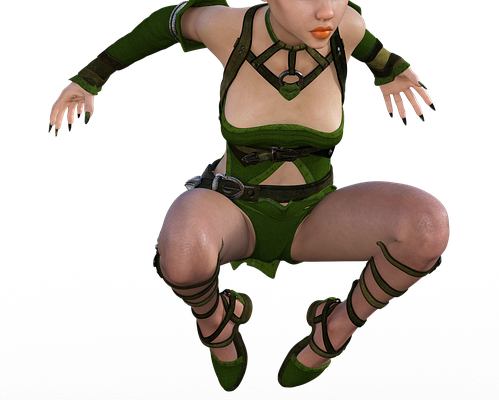Introduction
In today’s digital age, customizing 3D figures has become increasingly popular as a way to express one’s personality and creativity. With the advancement of technology, it is now easier than ever to create personalized 3D models that reflect who we are as individuals. Whether you are a digital artist looking to showcase your skills or simply someone who wants to add a unique touch to your online presence, customizing 3D figures allows you to make it your own.
The Benefits of Customizing 3D Figures
Customizing 3D figures offers a wide range of benefits that can enhance your online presence and digital projects. One of the main advantages is the ability to create a unique and personalized representation of yourself or your brand. By customizing 3D figures, you can stand out from the crowd and make a lasting impression on your audience.
Additionally, customizing 3D figures allows you to unleash your creativity and experiment with different styles, colors, and shapes. Whether you prefer a more realistic representation or a whimsical, cartoon-like character, the possibilities are endless when it comes to customizing 3D figures.
Furthermore, customizing 3D figures can help you build your brand identity and create a cohesive visual aesthetic across different platforms. Whether you are a content creator, influencer, or business owner, customizing 3D figures can help you establish a strong and recognizable brand presence online.
How to Customize 3D Figures
Customizing 3D figures may seem like a daunting task, especially if you are new to digital design. However, with the right tools and resources, you can easily create personalized 3D models that reflect your personality and style. Here are some steps to help you get started:
1. Choose a 3D modeling software
The first step in customizing 3D figures is to select a 3D modeling software that suits your skill level and design preferences. Popular software options include Blender, Autodesk Maya, and Cinema 4D, among others. Before you begin, take some time to familiarize yourself with the features and capabilities of the software to ensure a smooth customization process.
2. Sketch your design concept
Before diving into the 3D modeling process, it is helpful to sketch out your design concept on paper or using digital drawing tools. This will give you a clear vision of how you want your customized 3D figure to look and help guide you through the modeling process.
3. Start modeling your figure
Once you have a design concept in mind, it’s time to start modeling your 3D figure. Begin by creating a basic base mesh that serves as the foundation for your customization. From there, you can sculpt, texture, and add details to bring your figure to life.
4. Experiment with materials and textures
To add depth and visual interest to your 3D figure, experiment with different materials and textures. Whether you want a glossy finish, metallic sheen, or matte surface, adjusting the materials can significantly impact the overall look and feel of your customized figure.
5. Add personal touches and details
To make your 3D figure truly unique, consider incorporating personal touches and details that reflect your personality. This could include adding accessories, clothing items, or symbolic elements that hold personal significance to you.
Showcasing Your Customized 3D Figures
Once you have completed the customization process, it’s time to showcase your personalized 3D figures to the world. Whether you intend to use them for personal enjoyment, portfolio purposes, or marketing campaigns, there are various ways to share your creations with others.
1. Online portfolio or website
Create an online portfolio or website to showcase your customized 3D figures and other digital art projects. This serves as a digital gallery where potential clients, collaborators, or followers can view your work and get a sense of your artistic style.
2. Social media platforms
Share your customized 3D figures on social media platforms such as Instagram, Twitter, and Facebook to reach a wider audience and engage with fellow creatives. Use relevant hashtags and captions to attract attention and spark conversations about your work.
3. Collaborations and projects
Collaborate with other artists, designers, or content creators to incorporate your customized 3D figures into joint projects or creative collaborations. This allows you to expand your reach, gain new insights, and explore new opportunities within the digital art community.
Conclusion
Customizing 3D figures is a fun and creative way to express your personality, showcase your skills, and make a mark in the digital world. By following the steps outlined in this article and experimenting with different design elements, you can create personalized 3D models that truly reflect who you are as an individual. Whether you are an aspiring digital artist, seasoned designer, or hobbyist, customizing 3D figures offers a unique opportunity to make it your own and leave a lasting impression on your audience.
